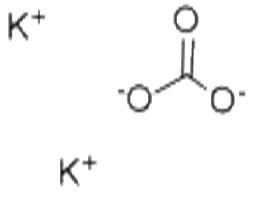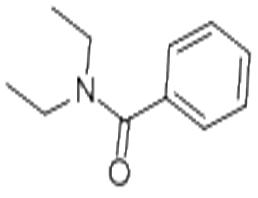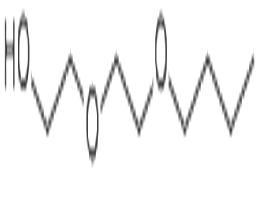
Potassium carbonate
| Price | $1330 |
| Package | 1000KG |
| Min. Order: | 1000KG |
| Supply Ability: | 10T |
| Update Time: | 2019-07-06 |
Product Details
| Product Name: Potassium carbonate | CAS No.: 584-08-7 |
| EC-No.: 209-529-3 | Min. Order: 1000KG |
| Purity: 99% | Supply Ability: 10T |
| Release date: 2019/07/06 |
CR312
| Product Name: | Potassium carbonate |
| Synonyms: | SALT OF TARTAR;PEARL ASH;potassium carbonate anhydrous;POTASSIUM CARBONATE;POTASH;carbonatedepotassium;carbonateofpotash;Carbonic acid potassium salt |
| CAS: | 584-08-7 |
| MF: | CK2O3 |
| MW: | 138.21 |
| EINECS: | 209-529-3 |
| Product Categories: | INORGANIC & ORGANIC CHEMICALS;FOOD ADDITIVES;Inorganics;Chemical Synthesis;Inorganic BasesMetal and Ceramic Science;Potassium Salts;Salts;Synthetic Reagents;O-P, Puriss p.a.;Puriss p.a.;Reagent Plus;AlphabeticalChemical Synthesis;Biological Buffers;BioUltra Buffers;Inorganic Bases;Reagent Grade;Pharmacopoeia (USP);Pharmacopoeia A-ZPharmacopoeia (USP);Pharmacopoeial OrganicsEssential Chemicals;Routine Reagents;USP;ACS GradeEssential Chemicals;Adsorbents, Filter Aids and Drying Agents;Essential Chemicals;Other Drying Agents;Analytical Reagents for General Use;O-P, Puriss p.a. ACS;Puriss p.a. ACS;metal carbonate;Chemical Synthesis;Inorganic Bases;Materials Science;Metal and Ceramic Science;Potassium Salts;Synthetic Reagents |
| Mol File: | 584-08-7.mol |
 |
|
| Potassium carbonate Chemical Properties |
| Melting point | 891 °C(lit.) |
| density | 2.43 g/mL at 25 °C |
| storage temp. | Store at RT. |
| solubility | H2O: 1 M at 20 °C, clear, colorless |
| form | powder |
| color | Yellow |
| PH | 11.5-12.5 (50g/l, H2O, 20℃) |
| Water Solubility | 1120 g/L (20 ºC) |
| Sensitive | Hygroscopic |
| Merck | 14,7619 |
| BRN | 4267587 |
| Stability: | Stable. Incompatible with moisture, acids, magnesium bromine trifluoride and magnesium bromine trichloride. |
| CAS DataBase Reference | 584-08-7(CAS DataBase Reference) |
| NIST Chemistry Reference | Dipotassium carbonate(584-08-7) |
| EPA Substance Registry System | Carbonic acid, dipotassium salt(584-08-7) |
| Safety Information |
| Hazard Codes | Xn |
| Risk Statements | 22-36/37/38-20/21/22 |
| Safety Statements | 26-36-37/39 |
| RIDADR | 3262 |
| WGK Germany | 1 |
| RTECS | TS7750000 |
| F | 3 |
| TSCA | Yes |
| PackingGroup | III |
| HS Code | 28364000 |
| Hazardous Substances Data | 584-08-7(Hazardous Substances Data) |
| MSDS Information |
| Provider | Language |
|---|---|
| Potassium carbonate | English |
| SigmaAldrich | English |
| ACROS | English |
| ALFA | English |
| Potassium carbonate Usage And Synthesis |
| Description | Potassium carbonate (molecular formula: K2CO3), also known as potash or pearl ash, appears as a white powder or as colorless solid crystal with salty taste and deliquescence. It can be dissolved in water to form a strongly alkaline solution. However, it is insoluble in organic solvents such as ethanol. It has wide applications. For example, it can be used as a drying agent, buffering agent and a source of potassium in laboratory. It can also be used for the manufacturing of fire extinguishers, soap, glass, and soften water. In addition, it is also used during the production of cocoa powder to balance pH. Moreover, it can be supplied to effervescent tablets which can conveniently provide potassium when there are low levels of potassium in the blood for patients caused by various kinds of factors. In industry, potassium carbonate is manufactured though first performing electrolysis of potassium chloride to generate potassium hydroxide, followed by reaction with carbon dioxide to derive the product. It is toxic upon eye contact, inhalation and ingestion. For rats, it has an oral LD50 being 1870 mg/kg. It has chronic effects on humans, causing damage to the mucous membranes, skin, and eyes. |
| Outline | Potassium carbonate (chemical formula: K2CO3), also known as potash; its appearance is colorless crystal or white granules and is easily soluble in water with its solution being strongly alkaline. Cool its saturated solution with generating glassy monoclinic crystalline hydrate 2K2CO3 • 3H2O separated. It has a density of 2.043. It will lose its crystal water at 100 ℃. It is insoluble in ethanol, acetone and ether. It has a strong hygroscopic effect and can absorb carbon dioxide and water upon exposure to air to be converted into potassium bicarbonate. It can be generated through the reaction between potassium hydroxide with carbon dioxide to give. You can also obtain it through the heating reaction between potassium chloride and magnesium carbonate, water and carbon dioxide under pressure or obtain it through the impregnation of tung seed ash and plant ash. It is mainly used as the raw material for synthesis of decarbonization gas, electronic tubes, glass, enamel, printing, welding, film developing, inorganic salts and kinescope glass shell. The impure potassium carbonate base is usually called base, Tong base or pearl grey and is one kind of early species of potash. The above information is edited by the Chemicalbook of Dai Xiongfeng. |
| Reference quality standards | Item Premium grade First grade Qualified II type Potassium carbonate (K2CO3) content ≥ 99.0% 98.5% 96.0% 99.0% Chloride (KCl) content ≤ 0.01% 0.10% 0.20% 0.03% Sulfur compounds (in K2SO4) content ≤0.01% 0.10% 0.15% 0.04% Iron (Fe) content of ≤ 0.001% 0.003% 0.010% 0.001% Water-insoluble content ≤ 0.02% 0.05% 0.10% 0.04% Burning loss ≤ 0.60% 1.00% 1.00% 0.80% |
| Content Analysis | To a pre-weighed weighing bottle with a plug, accurately weigh 1 g of dried sample measured according to the "loss on drying" assay and dissolve it in 50ml water. After adding of 2 drops of methyl red test solution (TS-149), stir continuously and titrate with 1mol/L hydrochloric acid titration until the solution turns into light pink. Heating the solution to boiling and further cool it down, continue to titrate to boiling until a pale pink color doesn’t disappears any more. Each Ml of 1mol/L hydrochloric acid is equivalent of 69.1 mg of potassium carbonate (K2CO3) |
| Solubility of potassium carbonate in water | The maximum solubility per 100 g of water at different temperatures (℃): 107g/0 ℃; 109g/10 ℃; 111g/20 ℃; 114g/30 ℃; 117g/40 ℃; 126g/60 ℃; 139g/80 ℃; 156g/100 ℃. |
| Toxicity | ADI does not make special provision (FAO/WHO, 2001). LD50: 18.70mg/kg (rat, oral). GRAS (FDA, §184.1619, 2000); |
| Limited use | GB 2760-2001: pasta, beverages, processing aids; take the GMP as limit. FAO/WHO (1984): Low times concentrated milk, sweetened condensed milk, dilute cream (2g/kg when being used alone; apply 3g/kg when being used together with other stabilizers, calculated based on anhydrous matter); milk powder, cream powder 5g/kg ( calculated based on anhydride); jams and jellies, orange peel jelly (to maintain the Ph value being at 2.8 to 3.5); infant formula (according to GMP); chocolate 50g/kg (calculated based on the incorporated part from cocoa beans, cocoa nibs, cocoa liquor, cocoa cakes, etc.); cocoa powder, sugar-containing cocoa powder, cocoa nibs, cocoa liquor and cocoa cake 5 g/kg (calculated from non-fat cocoa and K2CO3 meter; can be used for the manufacture of cocoa and chocolate products). |
| Chemical Properties | It belongs to monoclinic, and is white powder or granular crystal. It is easily soluble in water but insoluble in alcohol and ether. |
| Production method | The ion exchange method: dubbed 250 g/L solution and adding a small amount of potassium carbonate to remove calcium and magnesium ions. Ammonium bicarbonate solution is also prepared at a concentration 200 g/L in water. Pass the potassium chloride solution through a countercurrent into ion exchange column, to make the sodium resin R-Na become potassium type RK, wash off the chlorine ion within the gap of the soft resin; after finishing washing, put through the ammonium bicarbonate solution downstream into the resin exchange column, making the resin become ammonium type R-NH4 and obtain a mixed dilute solution of potassium bicarbonate and ammonium bicarbonate; go through evaporation once to decompose the ammonium bicarbonate; evaporate once again to decompose most of the potassium bicarbonate into potassium carbonate; the precipitated potassium chloride crystal after cooling was filtered and removed; further go through evaporation for three times to 54°C and filter to remove the compound salt of potassium and sodium. The solution was subject to carbonation to convert the potassium carbonate into potassium bicarbonate; further go through crystallization, separation, washing, calcination to obtain the finished product. Its reaction steps are as below: R-Na + KCl → R-K + NaCl R-K + NH4HCO3 → R-NH4 + KHCO3 2KHCO3 → K2CO3 + CO2 ↑+ H2O Apply electrolysis to dissolve the potassium chloride to a concentration of 270~300 g/L with adding appropriate amount of potassium carbonate to remove the calcium and magnesium ions inside it. After the clarification of the solution, adjust to pH 8~10 with hydrochloric acid; perform electrolysis at the cell voltage of 2.8~3.5 V and the bath temperature of 60~70 ℃ to obtain the potassium hydroxide solution with a concentration of 10% to 15%; further go through evaporation and concentration to a 50% potassium hydroxide and cool down to 30~35 ℃; Recycle the precipitated potassium chloride for reuse. Dilute the concentrated alkali solution to about 44%, and perform pre-carbonization; when the concentration of potassium hydroxide reaches 30 g/L or less, filter to remove the precipitate of magnesium hydroxide and then go through concentration for removing sodium; then conduct the carbonization to obtain the crude potassium carbonate with further carbonation obtaining the potassium bicarbonate crystals; The crystals undergoes washing with water, centrifuge, calcination to obtain the refined product of potassium carbonate. Its reaction steps are as below: 2KCl + 2H2O [electrolysis] → 2KOH + Cl2 ↑ + H2 ↑ 2KOH + CO2 → K2CO3 + H2O K2CO3 + CO2 + H2O → 2KHCO3 2KHCO3 → K2CO3 + CO2 ↑ + H2O The plant ash method mainly take advantage of various kinds of plant shell such as Kiriko shell, cotton seed hulls, tea and sunflower seed hulls for firing into plant ash. The plant ash is a mixture of potassium carbonate, potassium sulfate, and potassium chloride. They are separated by multiple steps including leaching, evaporation and crystallization. There are many ways for purification such as adding magnesium to remove phosphorus or put through carbon dioxide for pre-carbonization to remove the impurity or adding lime to remove phosphorus, aluminum and silicon. It needs evaporation for twice, cooling, separation, and further drying to obtain the finished product of potassium carbonate. Owing to the limitation in the sources of raw material, this method is not suitable for mass production and it has been eliminated. Leblanc method: Mix the potassium, coal, limestone in a certain ratio, add water and stir, wherein the potassium chloride is maintained at 6% to 8%, the sodium salt is maintained in 8% to 10% and then subject to calcination at 900~1000 ℃ to obtain the black ash. The black ash is pulverized and subject to hot water extraction. The immersion is further subject to evaporation to precipitate some part of unconverted potassium sulfate out; it was further sent to the carbonation tower for pre-carbonation after separation. Add the potassium permanganate into the carbonation solution to remove the impurities precipitate of aluminum, silicon, and iron; the filtrate was evaporated to the precipitation of potassium carbonate, sodium compound salt and impurities; the clarifying solution further undergoes secondary carbonation to obtain the crude potassium carbonate crystals; it further goes through filtering, water washing, and further calcination at 500~600 ℃ to obtain the finished potassium carbonate product. Its reaction processes are: K2SO4 + 2C + CaCO3 → K2CO3 + CaS + 2CO2 ↑ K2CO3 + CO2 + H2O → 2KHCO3 2KHCO3 → K2CO3 + CO2 ↑+ H2O Recrystallization method: dissolve the technical grade potassium carbonate in distilled water for solution purification; remove the impurities through filtration; the filtrate is further subject to concentration by evaporation, cooling crystallization, centrifugation, and drying to obtain the finished product of anhydrous potassium carbonate. |
| Uses | It can be applied to the washing and processing for the pre-exposed photosensitive material. It is mainly applied to the manufacturing of the kinescope glass of the electronics industry, the decarbonization of fertilizer production, and the manufacturing of potassium salt. It can be used as analysis reagents, fluxing agent as well as the preparation of various kinds of potassium salts. It can be used as reagents for analysis, baseline standard reagents and the fluxing agent of molten silicates and insoluble sulfates. It can be used as a leavening agent in food; it can also be used for glass, printing and dyeing, soap, enamel, preparation of potassium salt, decarbonylation of synthetic ammonia as well as being applied to color TV industry. It can be used as an alkaline agent and dough conditioner, and can also inhibit the souring of noodles. It can be applied to pasta food. Apply it in appropriate amount according to production requirement. It can be used for the production of optical glass and can increase the transparency, strength and refractive co-efficiency of the glass. It can also be used in the production of welding electrodes and can prevent the phenomenon of breaking arc during welding. It can be used for the production of vat dyes and dyeing and the white discharge of ice dyeing. It can be used as the absorbent for removing hydrogen sulfide and carbon dioxide. When being mixed with soda ash, it can be used as a dry powder extinguishing agent. It can also be used as the auxiliary material of acetone, and alcohol production and the antioxidant in the production of rubber. Its aqueous solution can be used for the scouring of cotton and the degreasing of wool. In addition, it can also be applied to the production of inks, pharmaceutical for photography, polyester, electroplating, leather, ceramic, building materials, crystal, potassium soap and medicine. Heavy potassium carbonate is mainly used as the raw material of production of kinescope glass shell and is widely used as the raw material of glass and special glass materials as well as being used for the decarbonization of chemical fertilizer. |
| References | https://en.wikipedia.org/wiki/Potassium_carbonate https://www.drugs.com/inactive/potassium-carbonate-106.html http://www.sciencelab.com/msds.php?msdsId=9926681 |
| Chemical Properties | white powder or granules |
| Uses | It is used as drying agent for organic solvents; a base. |
| Definition | ChEBI: A potassium salt that is the dipotassium salt of carbonic acid. |
| General Description | An aqueous solution of potassium hydroxide. Corrosive to metals and tissue. Density 12.8 lb /gal. Used to make soaps, other potassium compounds, in liquid fertilizers. |
| Air & Water Reactions | Water soluble. Addition of water evolves heat. |
| Reactivity Profile | Potassium carbonate neutralizes acids exothermically to form salts plus water. Reacts with certain metals (such as aluminum and zinc) to form oxides or hydroxides of the metal and generate gaseous hydrogen. May initiate polymerization reactions in polymerizable organic compounds, especially epoxides. May generate flammable and/or toxic gases with ammonium salts, nitrides, halogenated organics, various metals, peroxides, and hydroperoxides. May serve as a catalyst. Reacts when heated above about 84°C with aqueous solutions of reducing sugars other than sucrose, to evolve toxic levels of carbon monoxide [Bretherick, 5th Ed., 1995]. |
| Health Hazard | TOXIC; inhalation, ingestion or skin contact with material may cause severe injury or death. Contact with molten substance may cause severe burns to skin and eyes. Avoid any skin contact. Effects of contact or inhalation may be delayed. Fire may produce irritating, corrosive and/or toxic gases. Runoff from fire control or dilution water may be corrosive and/or toxic and cause pollution. |
| Fire Hazard | Non-combustible, substance itself does not burn but may decompose upon heating to produce corrosive and/or toxic fumes. Some are oxidizers and may ignite combustibles (wood, paper, oil, clothing, etc.). Contact with metals may evolve flammable hydrogen gas. Containers may explode when heated. |
| Toxicity | LD50 orally in rats: 1.87 g/kg, H. F. Smyth et al., Am. Ind. Hyg. Assoc. J. 30, 470 (1969) |
| Potassium carbonate Preparation Products And Raw materials |
| Preparation Products | 1-(2-Methylphenyl)piperazine-->3-Amino-4-nitrobenzitrifluoride-->1-(2-FLUORO-4-NITROPHENYL)PIPERIDIN-4-OL-->1-(4-METHYLPHENYL)PIPERAZINE-->7-Methoxycoumarin-->1-(5-aminopyridin-2-yl)piperidin-4-ol-->6-(1-PYRROLIDINYL)-3-PYRIDINAMINE-->4-(1H-IMIDAZOL-1-YL)BENZOIC ACID-->1-(1-Methyl-4-piperidinyl)piperazine-->2-(4-BENZYLOXYPHENYL)ETHANOL-->LOMIFYLLINE-->1-ALLYLOXY-2-METHOXY-BENZENE-->Citalopram-->7-ETHOXYCOUMARIN-->Potassium fluorosilicate -->Hexyl acetate-->Orris oil-->4-BENZYLOXY-2-NITROTOLUENE-->CHEMBRDG-BB 6088138-->N-FORMYLGLYCINE ETHYL ESTER-->2-(2-FORMYL-PHENOXY)-PROPIONIC ACID-->N-Methyl-4-pyridinamine-->2-CHLORO-4-(N,N-DIMETHYLAMINO)PYRIMIDINE-->N-(2-Methylphenyl)piperazine hydrochloride-->1-[5-NITROPYRIDIN-2-YL]PIPERIDINE-4-OL-->4-(5-Nitropyridin-2-yl)morpholine-->PROPYLENE GLYCOL MONOSTEARATE (CONTAINS CA. 35% MONOPALMITATE)-->2-Amino-4,6-dimethylpyrimidine-->5-NITRO-2-(1-PYRROLIDINYL)PYRIDINE-->Dipotassium glycyrrhizinate-->2-Bromocinnamaldehyde-->Tripotassium citrate-->O,O-diethyl-S-propyl dithiophosphate-->L-Antimony potassium tartrate-->Cimetidine-->Potassium borate -->Glycidyl phenyl ether-->1,3,5-Benzenetricarboxaldehydetrioxime-->FLURBIPROFEN AXETIL-->L-GLUTAMIC ACID MONOPOTASSIUM SALT |
| Raw materials | Potassium hydroxide -->CARBON DIOXIDE-->Ammonium bicarbonate-->Potassium chloride -->Potassium hydroxide solution-->POTASSIUM BICARBONATE-->Magnesium hydroxide-->CATION STANDARD - POTASSIUM |
Company Profile Introduction
Established in 2014,Career Henan Chemical Co. is a manufacturerspecializing in the sale of fine chemicals.
Mainly deals in the sales of:
Pharmaceutical intermediates
OLED intermediates:
Pharmaceutical intermediates;
OLED intermediates;
You may like
Recommended supplier
| Product name | Price | Suppliers | Update time | |
|---|---|---|---|---|
| $10.00/1KG |
VIP6Y
|
Hebei Weibang Biotechnology Co., Ltd
|
2024-11-12 | |
| $3.50/1kg |
VIP1Y
|
Hebei Andu Technology Com.,Ltd
|
2024-08-24 | |
| $10.00/1kg |
VIP4Y
|
Hebei Chuanghai Biotechnology Co,.LTD
|
2024-08-20 | |
| $99.00/5kg |
VIP1Y
|
HEBEI SHENGSUAN CHEMICAL INDUSTRY CO.,LTD
|
2024-08-19 | |
| $0.10/1KG |
VIP5Y
|
Shaanxi Dideu Medichem Co. Ltd
|
2024-08-05 | |
| $6.00/1kg |
VIP1Y
|
Hebei Longbang Technology Co., Ltd
|
2024-06-07 | |
| $99.00/1kg |
VIP1Y
|
Hebei Zhuanglai Chemical Trading Co.,Ltd
|
2024-05-08 | |
| $10.00/1kg |
Ouhuang Engineering Materials (Hubei) Co., Ltd
|
2024-04-26 | ||
| $28.00/10kg |
VIP1Y
|
Shandong Juchuang Chemical Co., LTD
|
2024-03-11 | |
| $30.00/1KG |
VIP1Y
|
Wuhan Ruichi Technology Co., Ltd
|
2024-01-03 |
- Since: 2014-12-17
- Address: No.967,15th Floor,Unit 7, Building 1, No.70 of DianChang Road, High-tech Development Zone, Zhengzho
INQUIRY
楊俊青
sales@coreychem.com
sales@coreychem.com







 China
China